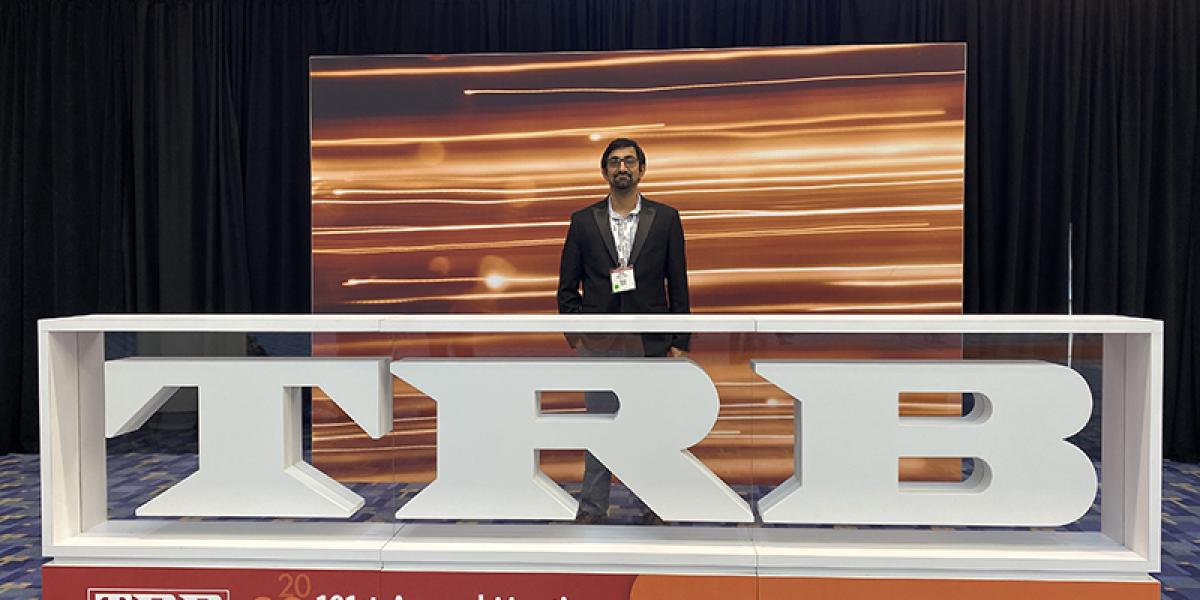A Traffic Engineer with Transportation and Traffic Management (TTM) presented his work on the national stage. Dr. Balaji Ponnu attended the 101st Annual Meeting of the Transportation Research Board, in Washington, D.C. last month.
“I feel really satisfied that I’m able to do something for the campus community,” said Dr. Ponnu.
The event attracted thousands of transportation professionals from around the world and is known as the world’s largest transportation research conference.
Dr. Ponnu has researched vehicular and pedestrian patterns at Ohio State to develop a framework that would allow the university to design safer and more efficient crosswalks on campus.
“We studied several crosswalks at the Wexner Medical Center,” Dr. Ponnu said. We evaluated what kind of traffic measures we can provide at these areas so people can have safer crossing opportunities.”
Some of those recommendations include installing a new traffic signal at the Herrick Drive Transit Hub crosswalk and rectangular rapid flashing beacons at crosswalks near the Riffe Building and the garage exits on 9th Avenue.
At the conference, Dr. Ponnu set up a table with an informative poster and talked to around 20 people.
“Every single minute of those two hours, I had somebody talking to me,” Dr. Ponnu said. “They were curious to know what I was doing.”
Dr. Ponnu says crosswalks on college campuses are unique with heavy pedestrian volumes and a young student population. According to the U.S. Department of Education, there are nearly 4000 colleges in the United States. Dr. Ponnu says there’s not much research about crosswalk operations on college campuses, which is why he chose the topic.
His work consists of pedestrian data from 20 crosswalks at Ohio State. A consulting firm collected the figures using video cameras to record 12 hours of activity.
Findings show crosswalk volumes on the Columbus campus dramatically increase when classes start and end and at multiple peak periods of 15 to 25 minutes around those times.
“I am proud of the work Balaji and the team have done on the crosswalk study to be selected to present at this year’s TRB Conference,” said Beth Snoke, director of TTM. “His work towards designing crosswalks to address pedestrian traffic patterns and demand will certainly improve the safety of pedestrians on campus.”
Dr. Ponnu has worked with TTM for nearly three years. He developed a passion for transportation in India, where he’s originally from. Shortly after receiving his Bachelor’s degree in Civil Engineering in 2005, Dr. Ponnu started working on a highway project with a private firm there.
“The traffic physics attracted me,” Dr. Ponnu said. “How bodies move, accelerate and decelerate. How do they stop and how do they go on bridges?”
Dr. Ponnu received his Masters degree in Civil Engineering, specializing in Transportation Engineering in India. He earned his PhD in the same discipline from Ohio State and started working with TTM in 2018.
“I feel great because the last 15 years or so, I’ve been in the area of transportation and pursued my PhD with the intent of improving vehicle and traffic flow,” Dr. Ponnu said.
The Annual Meeting of the Transportation Research Board is very familiar to Dr. Ponnu. He’s attended the conference for years and presented last year for the fifth time. The COVID-19 pandemic caused organizers to host the event online.
Dr. Ponnu plans to attend the annual meeting again next year.

